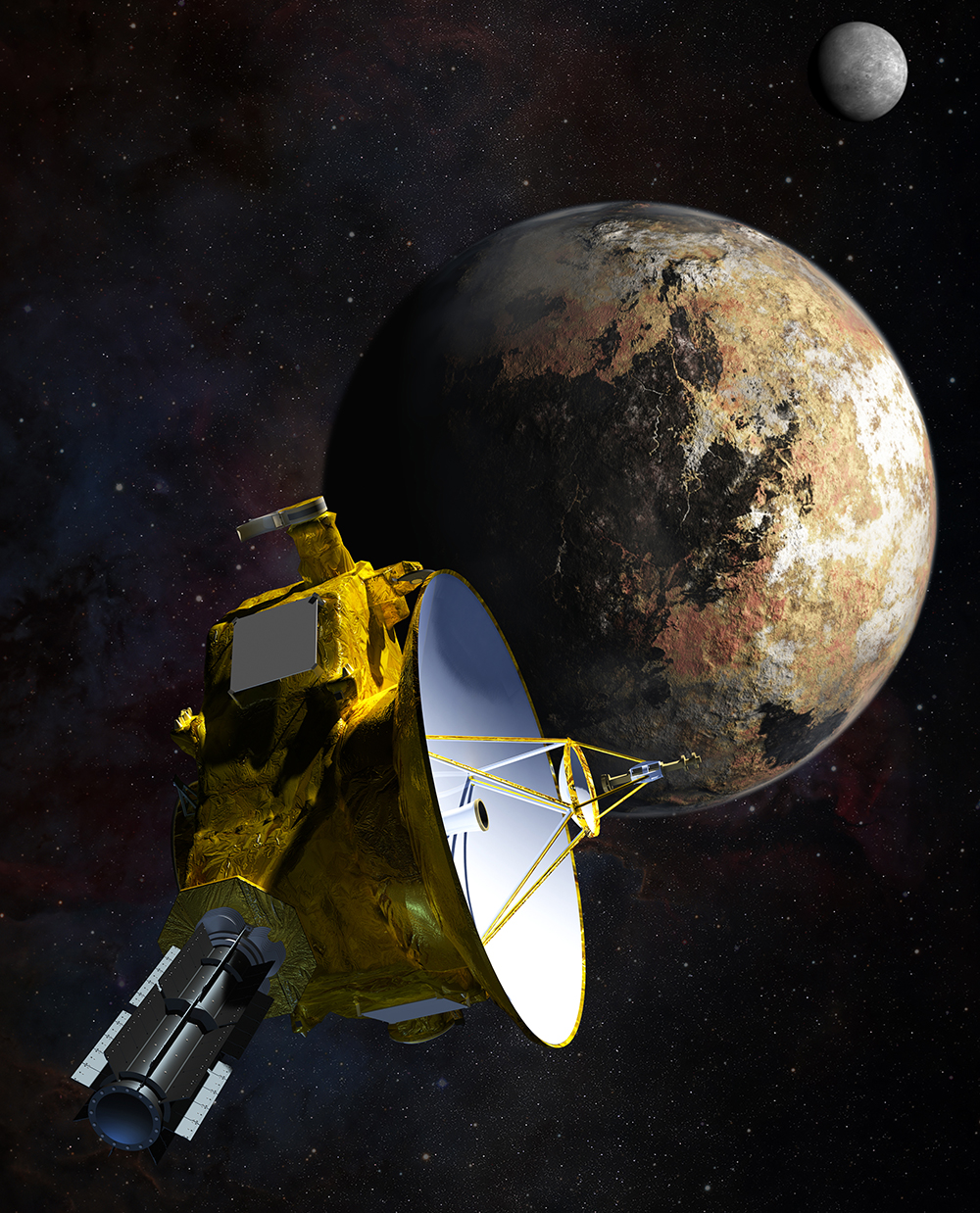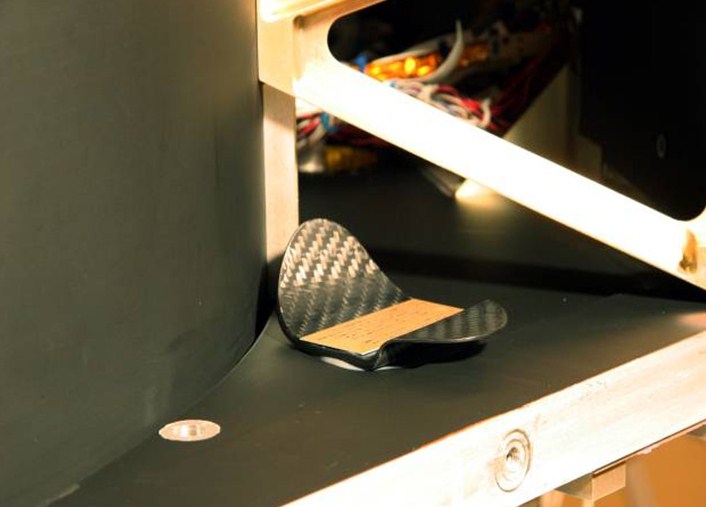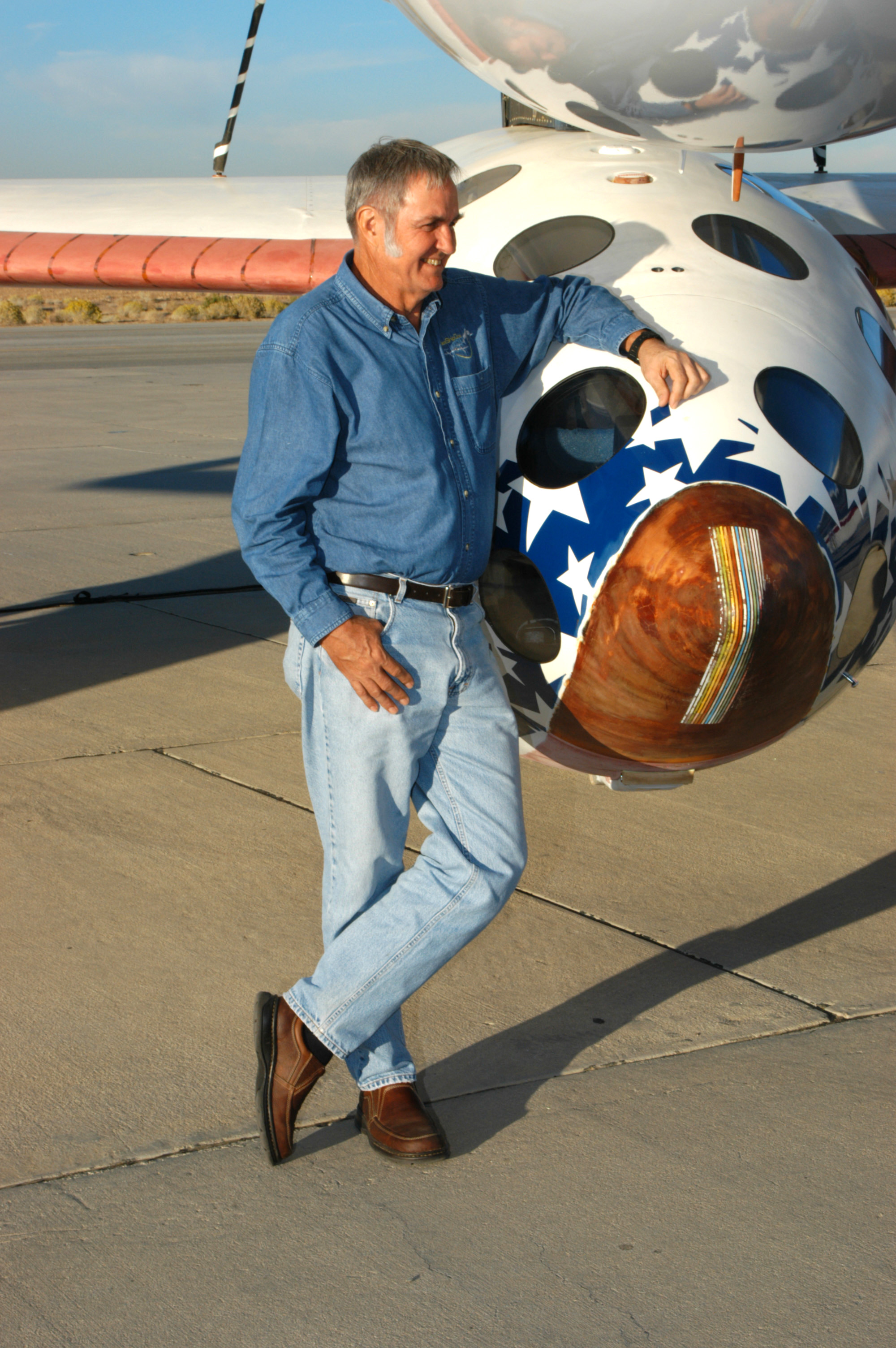NASA Probe Bound for Pluto Carries Piece of Pioneering SpaceShipOne


A small piece of spaceflight history will zoom through the Pluto system this July aboard NASA's New Horizons probe.
Inside New Horizons is a piece of SpaceShipOne, the first privately owned and operated manned spacecraft to reach space — which begins at an altitude of 62 miles (100 kilometers) above Earth — twice within a 14-day span. That 2004 feat bagged the SpaceShipOne team the $10 million Ansari X Prize, which was designed to spur the development of the private spaceflight industry.
"It is a beautiful, curved, autoclaved carbon-fiber part about 3 inches [7.6 centimeters] long, removed from the SpaceShipOne's pilot seat before it went to the National Air and Space Museum" in October 2005, said Burt Rutan, the lead designer of the famed vehicle and founder of the California-based aerospace firm Scaled Composites. [SpaceShipOne's 1st X Prize Flight (Video)]
"Yes, I was very proud to have a piece of SpaceShipOne at the edge of our solar system," Rutan told Space.com. "In fact, it has brought me to tears talking about it."
Record-setting flights
SpaceShipOne made a trio of record-setting flights in 2004. Mike Melvill piloted the craft to an altitude of 62 miles (100 km) on June 21 of that year, then took the vessel up to 64 miles (102 km) on Sept. 29. Pilot Brian Binnie then flew SpaceShipOne up to 70 miles (112 km) above Earth on Oct. 4 to win the Ansari X Prize.
Rutan underscored just what SpaceShipOne accomplished.
"Manned spaceflight is not only for governments to do," Rutan said. "We proved it can be done by a small company operating with limited resources and a few dozen dedicated employees. The next 25 years will be a wild ride, one that history will note was done for everyone's benefit."
Breaking space news, the latest updates on rocket launches, skywatching events and more!
More than a decade after SpaceShipOne's feat, a piece of the craft has embarked on another "wild ride" — this time out to Pluto and beyond.
Nine mementos
The $700 million New Horizons mission launched on Jan. 19, 2006, to give researchers their first up-close looks at Pluto and its five known moons. The probe will zoom within 8,500 miles (13,600 km) of Pluto's surface on July 14, then keep flying out into the Kuiper Belt, the ring of icy bodies beyond Neptune. The probe could then conduct a flyby of a second object in 2019 (if NASA approves and funds an extended mission).
New Horizons is carrying a few special payloads in addition to its scientific gear, as mission principal investigator Alan Stern revealed in October 2008 when a model of the Pluto probe was "inducted" into the Smithsonian National Air and Space Museum's Udvar-Hazy Center in Chantilly, Virginia. [Photos from NASA's New Horizons Pluto Probe]
"Today we're announcing the nine mementos that are flying with New Horizons to Pluto and the Kuiper Belt frontier. Why nine mementos? I bet you can guess," Stern, who's based at the Southwest Research Institute in Boulder, Colorado, told an attentive audience at the time. (Pluto, of course, became the solar system's ninth planet upon its discovery in 1930 — a distinction the frigid world lost when it was demoted to "dwarf planet" by the International Astronomical Union in 2006, in a decision that remains controversial.)
Here's the list of nine items:
1. A portion of Pluto discoverer Clyde Tombaugh's ashes, and an inscription about him
2. The "Send Your Name to Pluto" CD-ROM with more than 434,000 names of people who wanted to participate in this exploration
3. A CD-ROM with project personnel pictures
4. A Florida state quarter, for the state New Horizons launched from
5. A Maryland state quarter, for the state where New Horizons was built
6. A piece of the historic SpaceShipOnen and an inscription (see below)
7. A U.S. flag
8. A second version of a U.S. Flag
9. The 1991 U.S. stamp proclaiming, "Pluto: Not Yet Explored"
Messages in a bottle
New Horizons isn't the first spacecraft to carry souvenirs from Earth into the great beyond.
"There is a long history of sending these items into space," said Roger Launius, associate director for Collections and Curatorial Affairs at the National Air and Space Museum.
"The classic example is the gold records on Voyagers 1 and 2. Those gold-plated copper phonograph records — encoded with 115 images of scenes from Earth, audio greetings in 55 languages and 90 minutes of music from Bach to Chuck Berry, along with playing instructions — set the standard," Launius told Space.com.
"At some level, these represent messages in bottles to the cosmic ocean and have publicity value in offering a feel-good sentiment about the possibility of encountering interstellar life," he added.
Two-sided inscription
New Horizons was built at, and is being operated by, the Johns Hopkins University Applied Physics Laboratory (APL) in Laurel, Maryland.
According to APL spokesman Michael Buckley, the piece of SpaceShipOne is bonded to the aft deck of the spacecraft, or what would be considered the lower deck if the probe's dish antenna were deemed to be at the top.
Buckley told Space.com that the item is located opposite the panel that includes New Horizons' Long Range Reconnaissance Imager (LORRI) and star-tracking cameras. Stern said that the small piece of SpaceShipOne is installed on New Horizons' lower inside deck and sports a two-sided inscription.
The front side of the inscription reads, "To commemorate its historic role in the advancement of spaceflight, this piece of SpaceShipOne is being flown on another historic spacecraft: New Horizons. New Horizons is Earth's first mission to Pluto, the farthest known planet in our solar system."
The inscription on the back reads, "SpaceShipOne was Earth's first privately funded manned spacecraft. SpaceShipOne flew from the United States of America in 2004."
Leonard David has been reporting on the space industry for more than five decades. He is former director of research for the National Commission on Space and is co-author of Buzz Aldrin's 2013 book "Mission to Mars – My Vision for Space Exploration" published by National Geographic with a new updated paperback version to be released this May. Follow us @Spacedotcom, Facebook or Google+. Originally published on Space.com.

Leonard David is an award-winning space journalist who has been reporting on space activities for more than 50 years. Currently writing as Space.com's Space Insider Columnist among his other projects, Leonard has authored numerous books on space exploration, Mars missions and more, with his latest being "Moon Rush: The New Space Race" published in 2019 by National Geographic. He also wrote "Mars: Our Future on the Red Planet" released in 2016 by National Geographic. Leonard has served as a correspondent for SpaceNews, Scientific American and Aerospace America for the AIAA. He has received many awards, including the first Ordway Award for Sustained Excellence in Spaceflight History in 2015 at the AAS Wernher von Braun Memorial Symposium. You can find out Leonard's latest project at his website and on Twitter.



